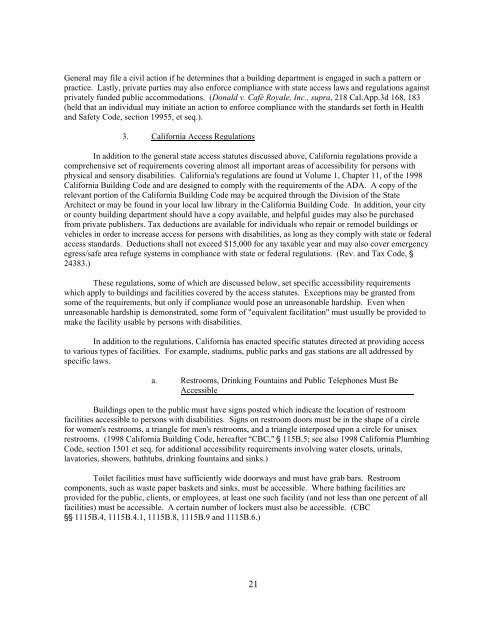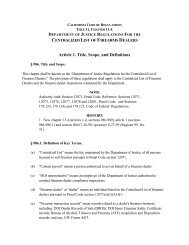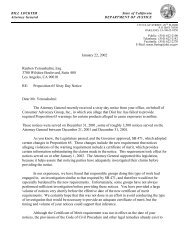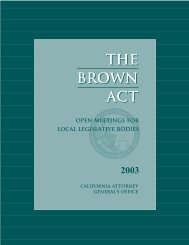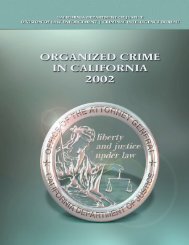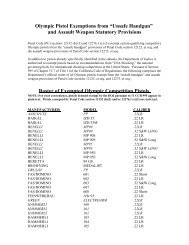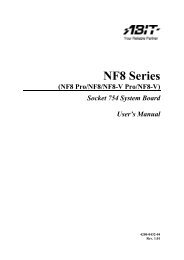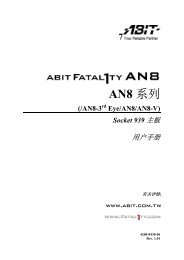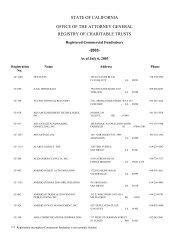Legal Rights of Persons With Disabilities - Ossh.com
Legal Rights of Persons With Disabilities - Ossh.com
Legal Rights of Persons With Disabilities - Ossh.com
You also want an ePaper? Increase the reach of your titles
YUMPU automatically turns print PDFs into web optimized ePapers that Google loves.
General may file a civil action if he determines that a building department is engaged in such a pattern or<br />
practice. Lastly, private parties may also enforce <strong>com</strong>pliance with state access laws and regulations against<br />
privately funded public ac<strong>com</strong>modations. (Donald v. Café Royale, Inc., supra, 218 Cal.App.3d 168, 183<br />
(held that an individual may initiate an action to enforce <strong>com</strong>pliance with the standards set forth in Health<br />
and Safety Code, section 19955, et seq.).<br />
3. California Access Regulations<br />
In addition to the general state access statutes discussed above, California regulations provide a<br />
<strong>com</strong>prehensive set <strong>of</strong> requirements covering almost all important areas <strong>of</strong> accessibility for persons with<br />
physical and sensory disabilities. California's regulations are found at Volume 1, Chapter 11, <strong>of</strong> the 1998<br />
California Building Code and are designed to <strong>com</strong>ply with the requirements <strong>of</strong> the ADA. A copy <strong>of</strong> the<br />
relevant portion <strong>of</strong> the California Building Code may be acquired through the Division <strong>of</strong> the State<br />
Architect or may be found in your local law library in the California Building Code. In addition, your city<br />
or county building department should have a copy available, and helpful guides may also be purchased<br />
from private publishers. Tax deductions are available for individuals who repair or remodel buildings or<br />
vehicles in order to increase access for persons with disabilities, as long as they <strong>com</strong>ply with state or federal<br />
access standards. Deductions shall not exceed $15,000 for any taxable year and may also cover emergency<br />
egress/safe area refuge systems in <strong>com</strong>pliance with state or federal regulations. (Rev. and Tax Code, '<br />
24383.)<br />
These regulations, some <strong>of</strong> which are discussed below, set specific accessibility requirements<br />
which apply to buildings and facilities covered by the access statutes. Exceptions may be granted from<br />
some <strong>of</strong> the requirements, but only if <strong>com</strong>pliance would pose an unreasonable hardship. Even when<br />
unreasonable hardship is demonstrated, some form <strong>of</strong> "equivalent facilitation" must usually be provided to<br />
make the facility usable by persons with disabilities.<br />
In addition to the regulations, California has enacted specific statutes directed at providing access<br />
to various types <strong>of</strong> facilities. For example, stadiums, public parks and gas stations are all addressed by<br />
specific laws.<br />
a. Restrooms, Drinking Fountains and Public Telephones Must Be<br />
Accessible<br />
Buildings open to the public must have signs posted which indicate the location <strong>of</strong> restroom<br />
facilities accessible to persons with disabilities. Signs on restroom doors must be in the shape <strong>of</strong> a circle<br />
for women's restrooms, a triangle for men's restrooms, and a triangle interposed upon a circle for unisex<br />
restrooms. (1998 California Building Code, hereafter ACBC,@ ' 115B.5; see also 1998 California Plumbing<br />
Code, section 1501 et seq. for additional accessibility requirements involving water closets, urinals,<br />
lavatories, showers, bathtubs, drinking fountains and sinks.)<br />
Toilet facilities must have sufficiently wide doorways and must have grab bars. Restroom<br />
<strong>com</strong>ponents, such as waste paper baskets and sinks, must be accessible. Where bathing facilities are<br />
provided for the public, clients, or employees, at least one such facility (and not less than one percent <strong>of</strong> all<br />
facilities) must be accessible. A certain number <strong>of</strong> lockers must also be accessible. (CBC<br />
'' 1115B.4, 1115B.4.1, 1115B.8, 1115B.9 and 1115B.6.)<br />
21


